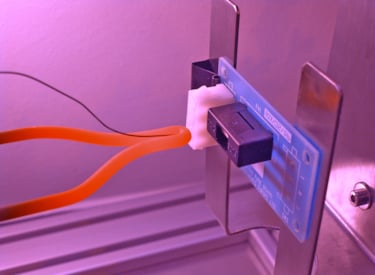Six Steps to Success in Electrical Safety Certification

As we all know, before any new electrical product is launched in the UK, it must be fully certified as safe to ensure it complies with national and international standards. Independent certification provides an essential layer of assurance for buyers and users. This process reduces the risk of product failures and ensures safety while protecting the manufacturer's reputation. So, as Kiwa Electrical Compliance (KEC) has broadened the scope of its product safety certification service, Leigh Picton, laboratory manager at KEC Blackwood, highlights the key steps in the process, which electrical contractors and engineers working in manufacturers, should be aware of.
Getting certification right is critical, but the process can be complex. Global and regional safety standards are increasingly rigorous, and each target market often has its own unique requirements. To streamline the process, collaborating with a reputable, independent safety certification provider such as Kiwa from the start is key.
Following this collaboration, there are six steps to achieving electrical safety certification which can help manufacturers launch their products with confidence.
1. The initial consultation
The first step involves engaging with a certification provider by submitting a Request for Quotation (RFQ). This helps define the exact scope of testing and the target countries or regions for product launch. The certification provider then creates a tailored testing roadmap, outlining key stages, milestones, required resources and estimated costs.
Starting this process early enables manufacturers to understand the challenges ahead and plan resources accordingly. Working with an established provider, ensures this roadmap is both optimised and actionable.
2. Product sample submission and documentation
Once the scope and costs are agreed upon, the next step is to submit a test sample of the product, along with comprehensive documentation. This includes:
- The manufacturer's details and list of manufacturing locations
- A complete product description
- Detailed documentation for each component in the product
This stage is crucial because every component, especially those designated as safety-critical, must meet all relevant local and international regulations. Certification for these components should ideally be obtained as early as possible to avoid delays later in the process.
3. Safety testing and assessment
With the product sample submitted, testing begins. Certification providers test the product and its components against International Electrotechnical Commission (IEC) standards and the national requirements of target countries. This ensures compliance with both global safety standards and local regulations.
Providers that conduct all testing in-house, such as Kiwa, can significantly minimise delays. Their dedicated laboratories and experienced engineers focus on delivering efficient, high-quality testing. Any issues that arise are communicated promptly, allowing for swift resolution. The process is collaborative, with ongoing dialogue to ensure clarity at every step.
4. Findings and feedback
After testing, the certification provider issues a 'findings letter' outlining any outstanding issues that need to be addressed. These findings provide manufacturers with clear guidance on the remedial steps required.
Addressing these issues promptly is critical to avoid delays. Whether it’s adjusting a component or refining documentation, this step ensures the product meets all necessary safety standards before certification can be finalised.
5. Issuing the CB Test Certificate and Report
Once the product complies with all relevant standards, the certification body issues the CB Test Certificate and Report. These documents are critical for securing national certifications. They include details on international standards as well as any deviations specific to the target countries.
This approach allows manufacturers to apply for certifications in multiple countries without duplicating laboratory testing, saving significant time and cost.
For instance, some regions, like the USA, may require additional certifications such as the NRTL mark. At Kiwa, we work with local partners to ensure their CB Test Certificate is leveraged effectively, streamlining national certification processes.
6. Official product launch
With all certifications in place, the product is ready for launch in its target markets. Manufacturers can proceed confidently, knowing their product meets all relevant safety standards and is independently confirmed to be safe and fit for use.
Launching without correct certification risks product failures that could harm users, damage reputations, and lead to legal action. By partnering with a provider, manufacturers ensure a smooth, efficient process that safeguards both customers and brand credibility.
Partnering with an established name in product safety certification provides access to a range of services, including the IECEE CB scheme. With UK-based Certified Body Testing Laboratories (CBTLs) and a global network, at Kiwa, we help streamline the certification process by minimising redundant testing across multiple regions, facilitating smoother market entry.
Achieving electrical safety certification doesn’t have to be a daunting task for new start-ups or established manufacturers. Following the six-step process outlined here ensures a smooth path to compliance, helping electrical contractors and engineers working for manufacturers bring safe, market-ready products to the UK and beyond.
Get your products market ready, contact the Kiwa team today by completing the form below for support with safety certification.
Does this article spark your interest? If you have any questions or want to find out more how Kiwa can help, just fill out the form and we'll get back to you.